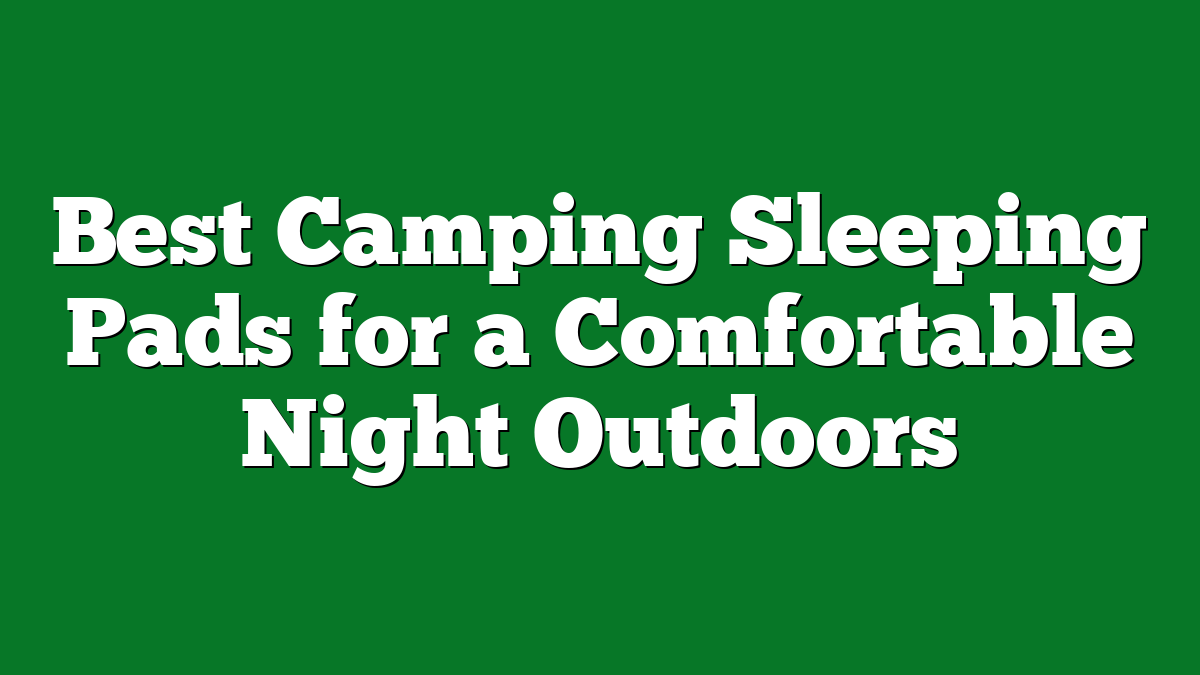Camping under the stars can be magical, but when the temperature drops, staying warm in your tent becomes a challenge. I’ve faced those chilly nights, wondering how to keep cozy without relying on a heater. It’s all about using the right techniques and a bit of creativity to turn your tent into a snug retreat.
Understanding the Importance of Staying Warm
Staying warm in a tent is crucial for comfort and safety during cold nights. Cold temperatures can lead to hypothermia and frostbite, which can quickly turn a fun camping trip into a risky situation. I’ve experienced freezing nights where a frigid tent became my biggest enemy.
Ventilation plays a key role in warmth retention. A well-ventilated tent prevents moisture buildup from breathing and condensation, which cools the inside. I always make sure to keep a small opening at the top of the tent to allow airflow while minimizing heat loss.
Selecting the right gear enhances warmth. A high-quality sleeping bag rated for low temperatures keeps me insulated. I prefer sleeping pads with thermal insulation to prevent heat from escaping through the ground.
Layering clothing significantly impacts comfort. I often wear moisture-wicking base layers, followed by insulating mid-layers, topped with a waterproof outer layer. This combination effectively traps body heat while protecting against wind and precipitation.
Incorporating natural insulation methods helps too. Materials like leaves and pine boughs under my sleeping pad provide extra warmth. The ground can sap heat quickly, so these natural barriers serve as effective insulation.
Using hot water bottles adds extra heat. Filling a durable water bottle with hot water before bed allows me to warm my sleeping bag. Positioning it close to my body creates a cozy sleeping environment.
Focusing on the right tent setup can make a big difference. Choosing a tent with a smaller footprint retains heat better than larger tents. Additionally, placing a tent in a sheltered area, away from cold winds, aids in keeping warm.
By understanding these elements of staying warm, I create a cozy atmosphere in my tent, even without a heat source. Camping can be enjoyable, even in the cold, when I implement these techniques.
Essential Gear for Insulation
Staying warm while camping without heat relies heavily on the right gear. Here’s a look at two crucial components that keep me comfortable in chilly conditions.
Choosing the Right Sleeping Bag
Selecting a sleeping bag suited for cold weather is vital. Look for one rated for temperatures lower than what you expect. I often choose a bag that uses down insulation; it’s lightweight and packs down small while offering excellent warmth. Another option is synthetic insulation, which performs well even when wet. Features like a draft collar and hood help trap heat, while zippers with anti-snag technology ensure easy entry and exit. My sleeping bag often comes with a stuff sack for compact storage, making it easier to fit into my backpack.
Layering Your Clothing
Layering clothing effectively builds warmth without bulk. I always start with moisture-wicking base layers, which keep sweat away from my skin. Mid-layers, like fleece or wool, provide insulation and trap body heat. For the outer layer, I favor waterproof and windproof jackets to protect against the elements. Don’t forget thermal socks; they’re essential for keeping my feet warm. Accessories like gloves, hats, and neck gaiters add extra protection against cold drafts. When layered properly, I can adapt to changing conditions without sacrificing comfort or mobility.
Techniques to Retain Body Heat
Staying warm in a tent without heat calls for some clever techniques. I’ve found these methods essential during my camping trips in colder conditions.
Utilizing Your Breath
Exhaling into the sleeping bag can help create a warming effect. I breathe out into the bag a few times to warm the air inside. This simple technique can elevate the inside temperature just enough to make a difference. Just make sure to keep the bag zipped up to trap that warmth.
Creating a Heat Barrier
Building a heat barrier around my sleeping area boosts my warmth significantly. I use extra gear like backpacks or gear bags to form a wall, preventing drafts. Additionally, I layer extra clothing or an emergency blanket near my feet to retain heat. It’s all about minimizing cold air flow around my sleeping bag and creating a cocoon of warmth within the tent.
Additional Tips to Enhance Warmth
Staying warm in a tent relies on clever strategies and resourcefulness. Here are a few additional tips to maximize warmth during cold nights.
Using Natural Insulators
Using natural insulators can greatly enhance warmth inside your tent. I often gather materials like leaves, pine needles, or grass to create a layer of insulation beneath my sleeping pad. These natural elements trap heat effectively and add a layer of comfort. I also like to pile some natural insulation against the tent walls; this method minimizes cold air seeping in. Furthermore, placing rocks or logs around the outside of the tent can help block wind, creating a barrier against the chill.
Setting Up Your Tent Properly
Setting up your tent properly plays a crucial role in staying warm. I position my tent on a flat surface, ideally elevated and away from wind exposure or standing water. Ensuring that the tent’s entrance faces away from the prevailing winds helps reduce drafts. Additionally, using the rainfly correctly will add another layer of protection against the cold. I find that sealing off any gaps is essential; using a ground tarp can provide an extra layer of insulation from the cold ground, keeping warmth inside more effectively.
Conclusion
Staying warm in a tent without heat can be a fun challenge if you’re prepared. I’ve learned that with the right gear and a few clever tricks it’s totally possible to create a cozy environment. Whether it’s layering up or using natural insulators there are plenty of ways to keep the chill at bay.
Remember to pay attention to your tent setup and make those small adjustments that can make a big difference. Camping in cold weather doesn’t have to be uncomfortable. With a little creativity and some thoughtful planning you can enjoy the great outdoors even when temperatures drop. Happy camping!











